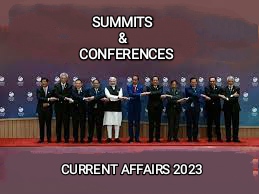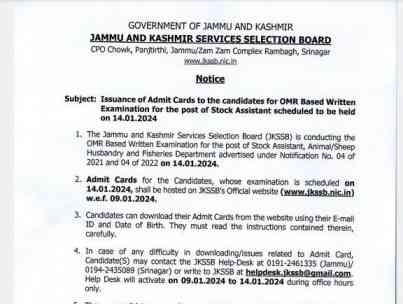Indian Economy
Planning Commission
* The Planning Commission was set up by a Resolution of the Government of India in March 1950, in pursuance of declared objectives of the Government To promote a rapid rise in the standard of living of the people by efficient exploitation of the resources of the country,increasing production and offering opportunities to all for employment in the service of the community.
* The Planning Commission was charged with the responsibility of making assessment of all resources of the country,augmenting deficient resources,
formulating plans for the most effective and balances utilization of resources and determining priorities.
* Prime Minister of India the Ex-officio Chairperson of Planning Commission of India.
* Jawaharlal Nehru was the the first Chairman of the Planning Commission.
* Gulzarilal Nanda became the first Deputy Chairman of Planning Commission.
National Development Council
The National Development Council (NDC) or the Rashtriya vikas Parishad is the apex body for decision mking and deliberations on Development matters in India, presided over by the Prime Minister.
Objectives
It has been set up with three objectives.
* To strengthen and mobilize the effort and resources of the nation in support of the Plan.
* To promote common economic policies in all vital spheres,
To ensure the balanced and rapid development of all parts of the country.
Composition
The National Development Council is presided over by the Prime Minister of India nd comprising of all Union Ministers, Chief Ministers of all the States and Administrators of Union Territories and Members of the Planning Commission.
Functions
* To prescribe guidelines for the formulation of the National Plan, including the assesment of resources for the Plan;
* To consider the National Plan as formulated by the Planning Commission;
* To consider important questions of social and economic policy affecting national development;
To review the working of the Plan from time to time and to recommend such measures aas are necessary for achieving the aims and targets set out in the National Plan.
Finance Commission of India
* The Finance Commission of India came into existence in 1951. It was established under Article 280 of the Indian Constitution of India by the President of India.
* It was formed to define the financial relations between the Centre and the State.
* The Finance Commission Act of 1951, states the terms of qualification appointment and disqualification, the term, eligibility and powers of the Finance Commission.
* Till date Thirteenth Finance Commission have submitted their reports.
Functions
* Distribution of net proceeds of taxes between Centre and the States, to be divided as per their respective contributions to the taxes.
* Determine factors governing Grants-in Aid to the States and the magnitude of the same.
* Work with the State Finance Commissions and suggest measures to augment the Consolidated Fund of the States so as to provide Additional resources to Panchayats and Municipalities in the State.
Agriculture
* Agriculture is the mainstay of the Indian Economy.
* The Agricultural output, however, depends on monsoon as nearly 60% of area sown in, is dependent on rainfall.
* Agriculture and its related goods contribute about 38% in total exports of the country.
* Agriculture accounts for about 14.7% of the total export earnings and provides raw material to a large number of Industries.
FOR MORE DETAILS LOG ON TO WWW.JKSSBALERTS.IN
* India holds first position in the world in the production of sugarcane and sugar.
* India is the largest milk producing country in the world.
* Asom is the biggest tea producer in the country.
* India is the sixth largest fish producer in the world.
* India is the sixth largest fish producer in the world.
Largest producers of Various Crops
CROPS STATES
Rice Paschim Bangal
Wheat Uttar pradesh
Pulses Madhya Pradesh
Groundnut Gujrat
Soyabean Madhya Pradesh
Sunflower Karnatka
Sugarcane Uttar Pradesh
Cotton Maharashtra
Jute West Bengal
Total foodgrain UP
Total Oilseeds MP
Industry
* After Independence, first Industrial Policy was revised on April, 1948 by the Union Industry Minister Mr Shyama Prasad Mukherjee.
* There were four categories of industries in the Industrial Policy of 1948 which was reduced to three in the Industrial Policy of 1956.
* In 1973, joint sector was constituted on the recommendations of Dutta Committee.
* Privatization and Liberation are the main thrust areas in the New Industrial Policy of 1991.
Banking System of Indian
The first purely Indian Bank was the Punjab National Bank 1894.
Reserve Bank of India
* It was the Central bank of the Country.
* It was established on 1st April, 1935 and it was nationalized on 1st January, 1949, Whey only IDBI is mentioned other unpart and bak such as - SIDBI, EXIM, NABARD, UTI etc are missing.
* It regulates, controls credit, issue, licenses and functions as banker of all banks and the government.
IDBI
Industrial Development Bank of India ( IDBI ) is the tenth largest bank in the world in the terms of development.
State Bank of India (SBI)
* It was created in January, 1921 by amalgamation of 3 presidency banks.\
* After nationalization in 1955, its name was changed to State bank of India.
* It is the biggest commercial bank in the public sector of India.
* It has the largest number of branches (more than 13000) in the world.
Tax System
* A compulsory contribution given by a citizen or organization to the government is called Tax, which is used for meeting expenses on welfare work. * The tax system has been divided into two parts
Tax by Central Government Custom Duty, Income tax and Corporate tax etc.
Tax by State Government. The State government has right to collect all the taxes in this category and to spend them.
There are two types to taxes.
Direct Taxes The taxes levied by the Central Government on incomes and wealth are important direct taxes e.g, Income Tax Property Tax gift Tax etc.
Indirect Taxes. The main forms of indirect taxes are customs and excise duties and sales tax.e.g, Goods and services Tax (GST) Sales tax, Excise Duty, Custom duty Etc.



.jpg)
.jpg)



